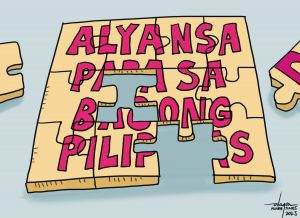Will Davao City be able to maintain its push for sustainable development amidst its rapid urbanization growth?
This is a question that requires an honest-to-goodness answer and not just one that suits one’s ambition to remain in power for the longest time possible.
Yes, it seems a given that political leaders would want the success in their leadership measured in terms of the level of visible development projects that came to the city during their incumbency. And we normally agree with them because we think what we can see is what we deserve to get.
What is not given substantial attention — if at all given — is when the negative impact of development takes its toll on the population.
One example is the almost unabated granting of permits to residential subdivision projects in all areas of Davao City’s peripheries. Yes, higher grounds such as the Shrine Hills, Langub, Magtuod, Buhangin, Cabantian, Mandug, Acasia, Gatungan, Catalunan Grande, the Mintal-Bago Gallera-Toril triangle, and now even the former coconut-dominated farm areas in Tacunan, and Ula are already sites of new large residential subdivisions.
All these housing projects have led to the cutting of trees, coconut included, leveling of hilly portions in order to have more space that can be offered for prospective house and lot buyers at much exorbitant prices. Meanwhile, the city’s existing drainage system is not enough to accommodate wastewater coming from the newly established housing projects. More sadly, some areas in the city where these subdivisions are situated are not even connected to the main drain.
And if we factor the total areas occupied by the houses and the subdivision roads that are being concreted, it is no brainer for one to know how much of the soil’s absorptive capacity for rain water is diminished. Therefore, all the unabsorbed water flows to lower grounds mostly through the subdivision roads down to where it settles for a period of time. The result of course is none other than flooded downtown areas of the city.
We also have this possibility of expanding the city’s area for downtown development. But what is happening now is that the local government leaders are beaten to the draw by informal settlers. This sector have actually allocated for themselves hundreds of hectares of the city’s shorelines emboldened by the thought that they cannot just be ousted from their occupied areas because they are voters that can make or unmake politicians.
So, what is happening now is that even the government has to plead with them to give way to roads and other projects that are very important in solving the burgeoning traffic condition of the city.
In fact even when their coastal residences are being battered to full destruction by the seasonal monsoon waves, the informal settler house owners just ignore the warnings of the local government and insist on not abandoning the site for fear that they’d be banned by the authorities from rebuilding their abode.
Frankly, we do not believe that Davao City is wanting in ordinances and other policies governing the implementation of both government and private-sector initiated development projects. What we are convinced is that there is no strict implementation of these ordinances and policies.
That is why we were not surprised to read and hear reports of some 100 developers of commercial and residential estates proceeding with their projects even without first fully complying with the requirements of both the local and national governments.
That is why we were far from being surprised when, after the Piapi area was covered by the World Bank-funded Slum Improvement and Resettlement (SIR) Project and the residents then covered by a city-commissioned census were sold lots on give-away prices for them to build their permanent houses, still new informal settler colonies started rising from the edge of the SIR area towards the sea. Hence, what could have been a beautiful coastal walk-way on the seaside of the Piapi SIR is already another agglomeration of stilt houses that shake with every wave that rolls on the shore.
All these of course had unfolded even with the existence of local ordinances and national legislation that apparently are not being applied to the letter.
When can the city possibly see the rise of leaders that have the unflinching political will to apply existing laws sans fear or favor and thinking first and foremost of the well-being of the general public and not of aggrandizing their political ambitions first?
Well, this could be wishful thinking for now.


